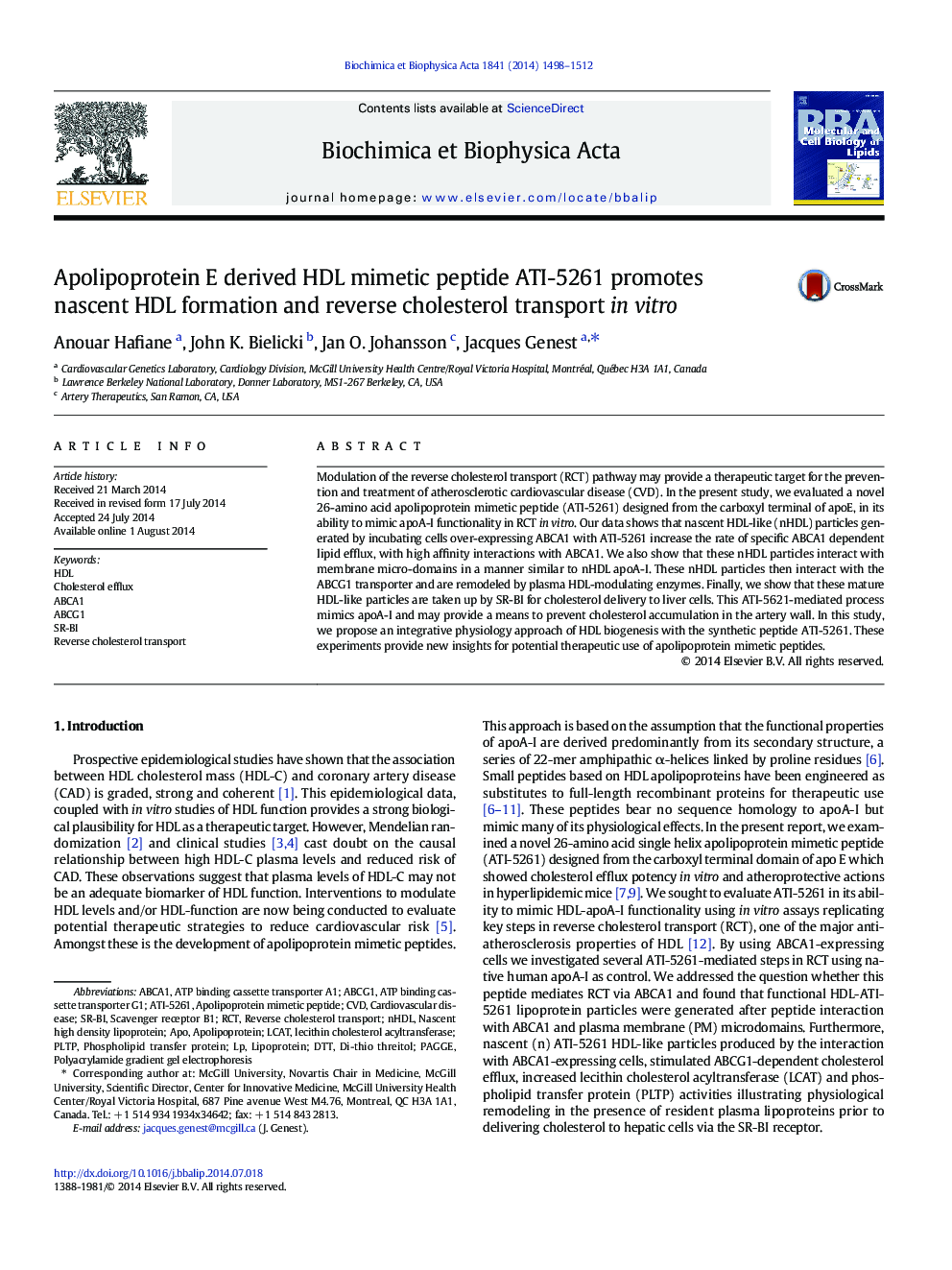| Article ID | Journal | Published Year | Pages | File Type |
|---|---|---|---|---|
| 8302265 | Biochimica et Biophysica Acta (BBA) - Molecular and Cell Biology of Lipids | 2014 | 15 Pages |
Abstract
Modulation of the reverse cholesterol transport (RCT) pathway may provide a therapeutic target for the prevention and treatment of atherosclerotic cardiovascular disease (CVD). In the present study, we evaluated a novel 26-amino acid apolipoprotein mimetic peptide (ATI-5261) designed from the carboxyl terminal of apoE, in its ability to mimic apoA-I functionality in RCT in vitro. Our data shows that nascent HDL-like (nHDL) particles generated by incubating cells over-expressing ABCA1 with ATI-5261 increase the rate of specific ABCA1 dependent lipid efflux, with high affinity interactions with ABCA1. We also show that these nHDL particles interact with membrane micro-domains in a manner similar to nHDL apoA-I. These nHDL particles then interact with the ABCG1 transporter and are remodeled by plasma HDL-modulating enzymes. Finally, we show that these mature HDL-like particles are taken up by SR-BI for cholesterol delivery to liver cells. This ATI-5621-mediated process mimics apoA-I and may provide a means to prevent cholesterol accumulation in the artery wall. In this study, we propose an integrative physiology approach of HDL biogenesis with the synthetic peptide ATI-5261. These experiments provide new insights for potential therapeutic use of apolipoprotein mimetic peptides.
Keywords
scavenger receptor B1ATP binding cassette transporter G1PAGGEnHDLPLTPABCG1LCATSR-BIRCTABCA1DTTHDLATP binding cassette transporter A1apoapolipoproteinpolyacrylamide gradient gel electrophoresiscardiovascular diseaseCholesterol effluxCVDLipoproteinPhospholipid transfer proteinLecithin cholesterol acyltransferasereverse cholesterol transport
Related Topics
Life Sciences
Biochemistry, Genetics and Molecular Biology
Biochemistry
Authors
Anouar Hafiane, John K. Bielicki, Jan O. Johansson, Jacques Genest,
